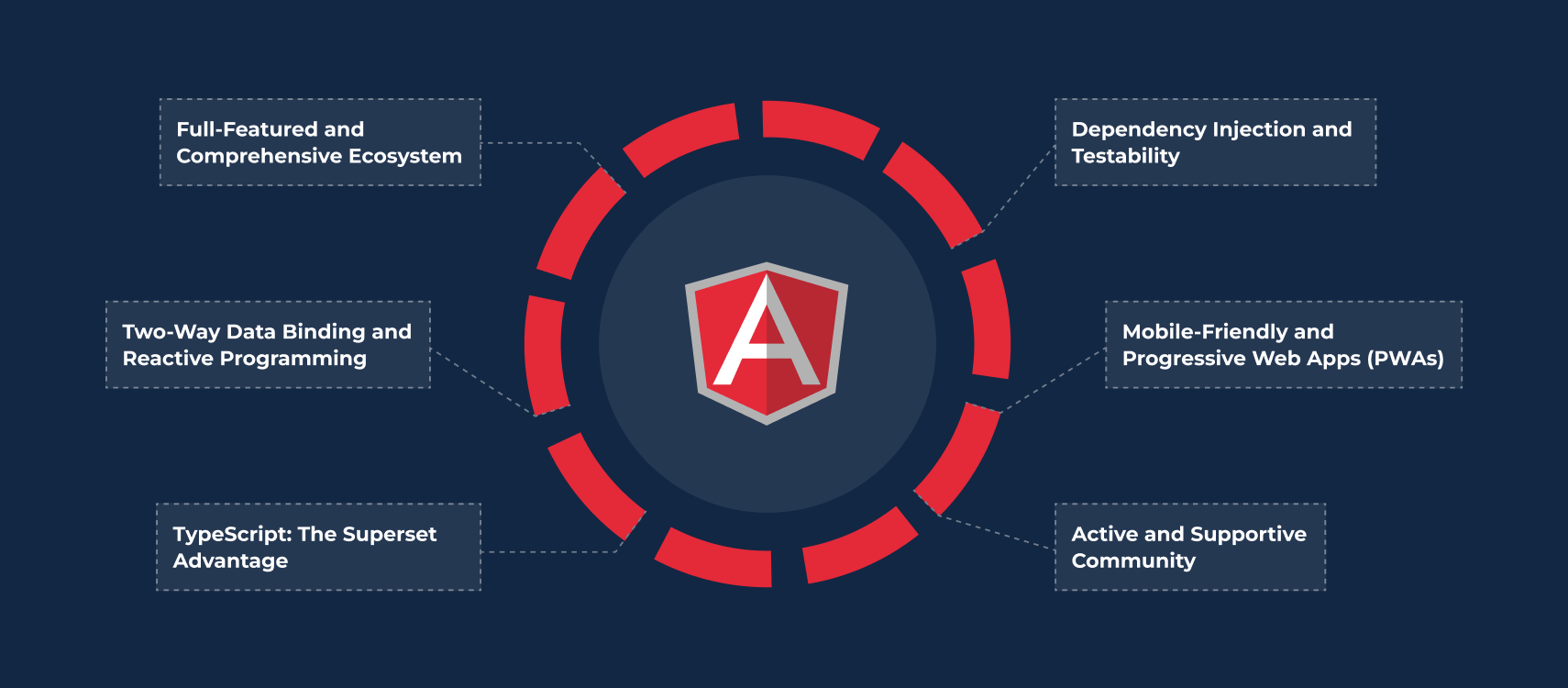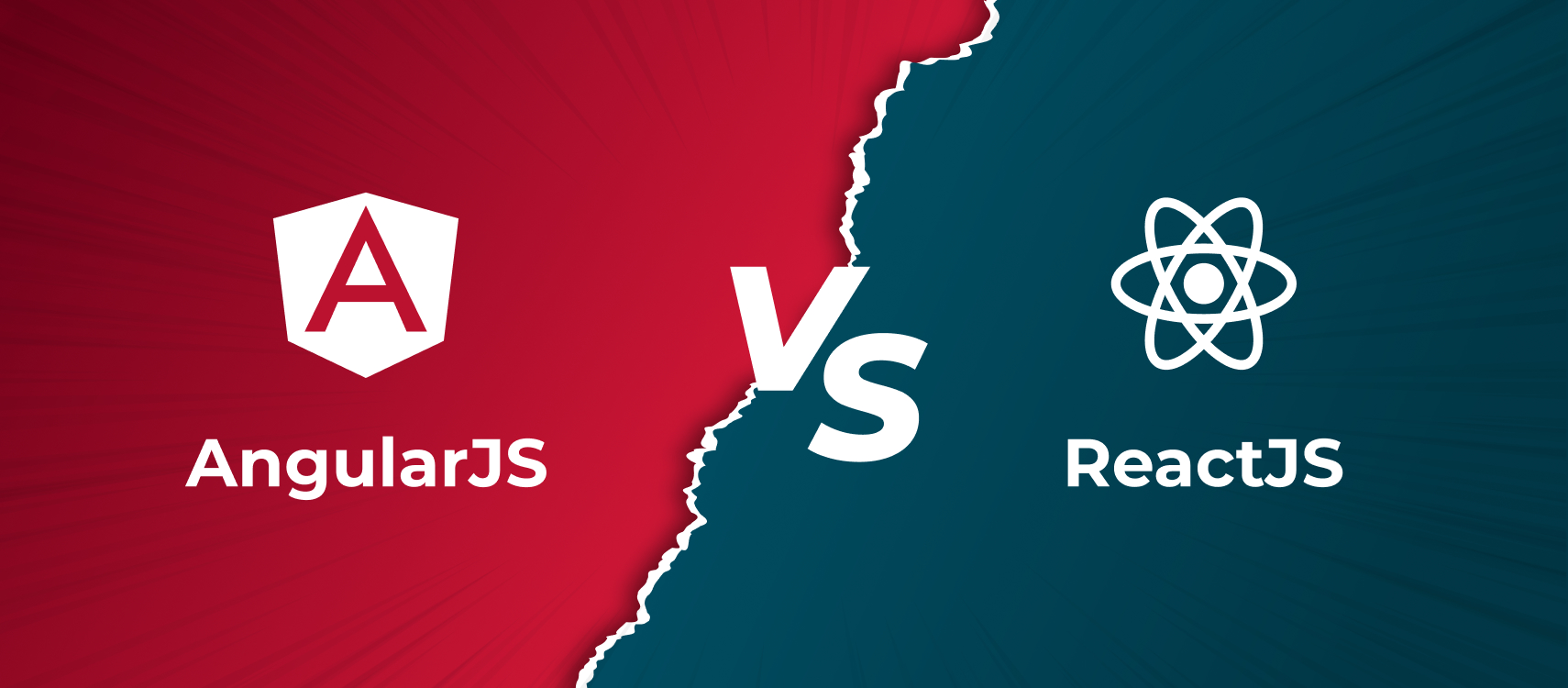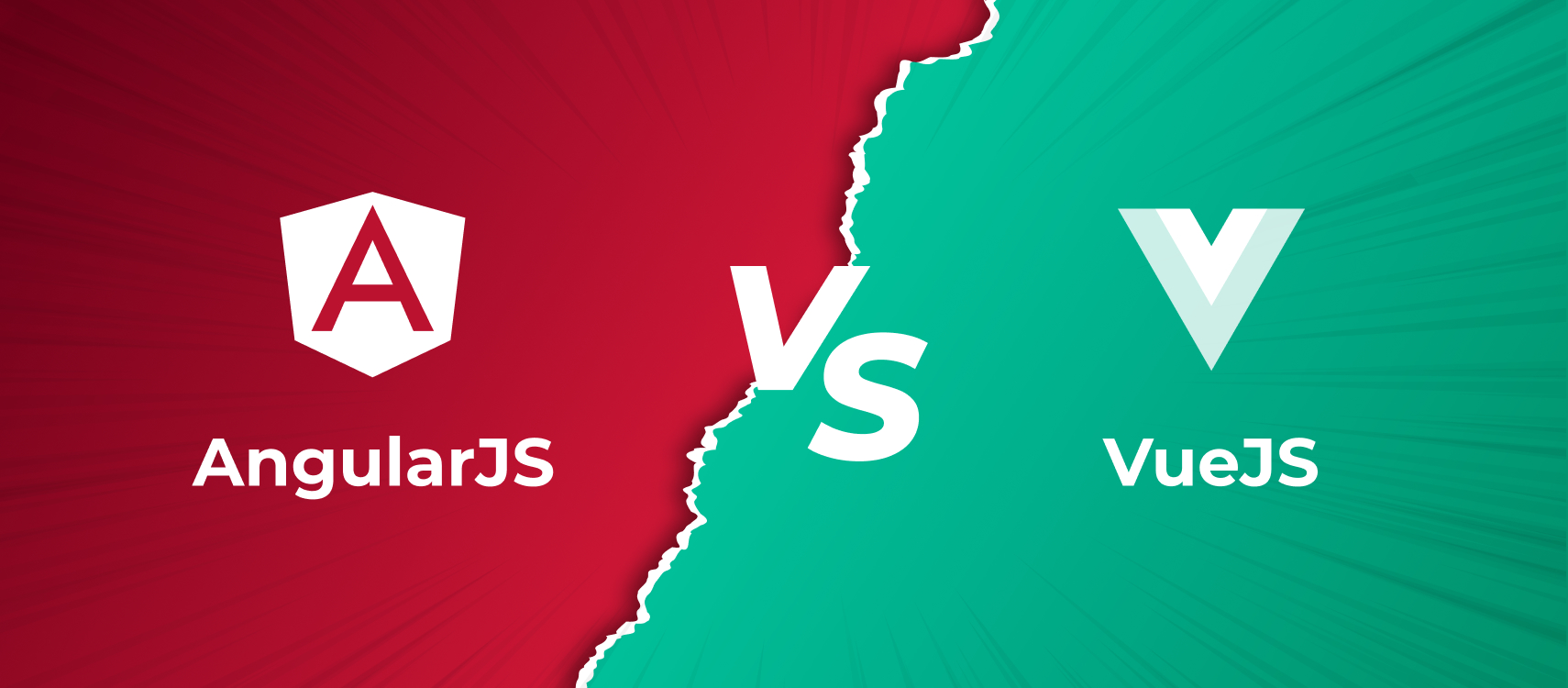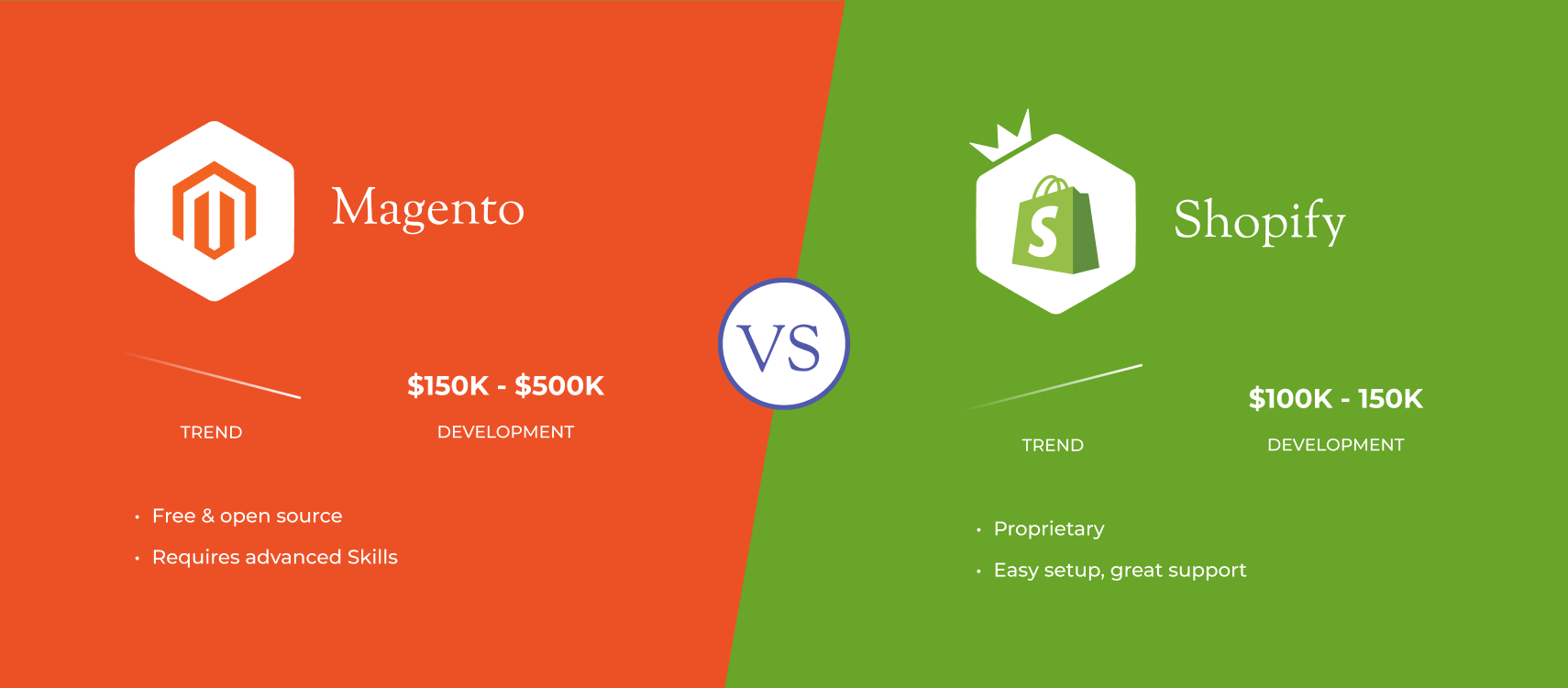Table of Contents
- Angular's Full Ecosystem
- Two-Way Data Binding
- TypeScript: The Superset Advantage
- Dependency Injection and Testability
- Mobile-friendly & PWA Support
- Active and Supportive Community
- Framework Comparison
- Angular vs. React
- Angular vs. Vue.js
- Summarising
In the dynamic world of web development, frontend frameworks play a crucial role in creating seamless and robust user experiences. Among the myriad of options available, Angular has emerged as a frontrunner, leading the pack of frontend frameworks.
Businesses hire Angular developers over skilled developers of other frontend frameworks mainly because of its full-featured ecosystem, two-way data binding, TypeScript integration, dependency injection, mobile-friendliness, and a thriving community.
In this article, we will delve into the key reasons why Angular maintains its supremacy over other frontend frameworks, exploring its features, architecture, performance, and community support.

Full-Featured and Comprehensive Ecosystem
One of the primary reasons leading web projects reach out to Angular development company is its comprehensive ecosystem. Unlike other frameworks that rely on external libraries for various functionalities, Angular provides an all-inclusive package, making it a powerful tool for developers. From templating and data binding to HTTP client and form validation, Angular offers built-in modules that facilitate smooth development and eliminate the need for external dependencies.
Angular’s modular architecture promotes code reusability and maintainability, enabling developers to create complex applications with ease. The framework also includes a powerful CLI (Command-Line Interface) that streamlines project setup and management, making it a go-to choice for both seasoned developers and newcomers.
Two-Way Data Binding and Reactive Programming
Angular introduced the concept of two-way data binding, enabling seamless synchronization between the model and the view. When data in the model changes, the view automatically updates, and vice versa. This bi-directional flow simplifies the development process and eliminates the need for manual DOM manipulation, reducing the chances of errors and enhancing productivity.
Moreover, Angular development adheres to reactive programming principles, utilizing the RxJS library to manage asynchronous operations efficiently. Reactive programming facilitates the handling of data streams and events, leading to more predictable and maintainable code. This powerful combination of two-way data binding and reactive programming sets Angular apart from other frameworks, ensuring real-time and dynamic user experiences.
TypeScript: The Superset Advantage
Angular’s foundation lies in TypeScript, a statically-typed superset of JavaScript. The use of TypeScript brings several advantages to the table, making Angular more robust and secure compared to frameworks built solely on JavaScript.
TypeScript enforces strict typing, reducing the likelihood of runtime errors and improving code quality. With the support of interfaces, classes, and modules, TypeScript enhances code organization and facilitates the adoption of Object-Oriented Programming (OOP) principles. Furthermore, the comprehensive tooling and editor support for TypeScript enable developers to catch errors during the development phase, fostering a seamless and error-free coding experience.
Dependency Injection and Testability
Angular incorporates a powerful dependency injection system that simplifies component communication and promotes loose coupling between various parts of an application. By allowing components and services to declare their dependencies, Angular takes care of the instantiation and management of objects, minimizing boilerplate code and enhancing the maintainability of the application.
The dependency injection system also significantly contributes to the testability of Angular applications. By easily mocking dependencies during unit testing, developers can isolate components and services, thoroughly testing each unit in isolation. This testability aspect boosts the overall quality of the codebase and fosters a culture of writing unit tests, which leads to more reliable and stable applications.
Mobile-Friendly and Progressive Web Apps (PWAs)
With the increasing prominence of mobile devices, creating mobile-friendly applications is a top priority for developers. Angular addresses this need by offering a responsive design that adapts to various screen sizes seamlessly. Its robust and modular architecture ensures that the application performs optimally on both desktop and mobile platforms, resulting in a consistent user experience across devices.
Angular’s compatibility with service workers allows developers to build Progressive Web Apps (PWAs) effortlessly. PWAs enable enhanced offline capabilities, faster loading times, and better user engagement, making Angular a preferred choice for companies looking to build performant web applications that work seamlessly on both online and offline modes.
Active and Supportive Community
A thriving and supportive community is crucial for the long-term success of any technology. Angular boasts a large and vibrant community of developers, enthusiasts, and experts who actively contribute to the framework’s growth and knowledge-sharing.
The Angular community hosts numerous conferences, webinars, and meetups worldwide, offering opportunities for networking and skill development. The community-driven resources include blogs, tutorials, and open-source projects that address common challenges and provide valuable insights into best practices and advanced techniques.
Angular’s core team actively engages with the community, addressing issues promptly and releasing regular updates based on user feedback. This responsiveness ensures that Angular remains current with the latest trends and continues to evolve in response to the changing needs of developers and the industry.
Angular vs. Other Leading Frameworks: A Comparative Analysis
Angular faces stiff competition from other prominent front-end frameworks, such as React and Vue.js. Each of these frameworks has its strengths and caters to different development needs. Let’s delve into a detailed comparison of Angular with these leading alternatives:
Angular vs. React

Templating and Data Binding:
- Angular employs a two-way data binding approach, where changes in the model are instantly reflected in the view and vice versa. React, on the other hand, utilizes a virtual DOM and a unidirectional data flow.
Learning Curve:
- Angular’s comprehensive ecosystem and TypeScript-based architecture can result in a steeper learning curve, especially for developers transitioning from vanilla JavaScript. React’s simplicity and ease of integration with existing projects make it more accessible for developers of all skill levels.
Community and Ecosystem:
While Angular also has a robust community, React’s ecosystem offers more diverse options for developers.
Performance:
- React’s virtual DOM and optimized rendering process contribute to its superior performance. However, Angular’s architecture has significantly improved over the years, narrowing the performance gap between the two frameworks.
Tooling:
Angular’s CLI provides comprehensive tooling and built-in generators, simplifying project setup and management. React, being a library rather than a full-fledged framework, relies on external tools and configurations for similar functionality.
Angular vs. Vue.js

Learning Curve:
- Vue.js prides itself on being one of the most approachable frontend frameworks. Angular, with its opinionated structure and TypeScript, may require more effort for newcomers.
Performance:
- Vue.js boasts an impressive performance, thanks to its reactivity system and optimized rendering mechanisms. Angular’s use of TypeScript and additional abstraction layers does not have a big impact on performance, and the difference is often negligible.
Size and Bundle:
- Vue.js maintains a compact size, allowing for quick setup and minimal overhead. Angular’s tree-shaking and lazy-loading features can mitigate the loading speed concern.
Community and Ecosystem:
- While Angular has a mature and extensive community, Vue.js has rapidly grown in popularity, attracting a dedicated and enthusiastic developer base.
Flexibility:
- Vue.js is praised for its flexibility, enabling developers to integrate it into existing projects gradually. Angular’s opinionated architecture may require a more substantial commitment.
Get more info about frameworks: Comparing 3 Leading JavaScript Frameworks
Summarising
Angular empowers developers to create sophisticated, scalable, and high-performance web applications. As technology evolves, Angular’s commitment to innovation and community collaboration ensures that it remains a robust and preferred choice for developers worldwide.










